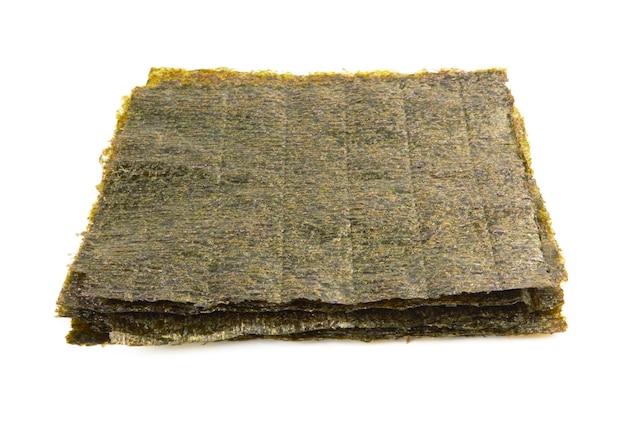
### Eating Foods Rich in Iodine: A Guide
Eating foods rich in iodine is essential for thyroid health, which impacts metabolism, detoxification, growth, and development. While seaweed and seafood are well-known sources, there are also many delicious plant-based options high in iodine, such as certain berries and potatoes.
Recommended Daily Allowance (RDA) for Iodine
The RDA for iodine varies by age and life stage. However, considering iodine’s impact on various bodily functions, some healthcare professionals believe these recommendations might be lower than necessary. For those with thyroid conditions like hypothyroidism or hyperthyroidism, specific iodine intake recommendations can differ, and in some cases, additional iodine can worsen the condition. Always consult your healthcare provider for personalized advice.
Infants birth-6 months: 110 mcg (if not breastfeeding)
Infants 7-12 months: 130 mcg (if not breastfeeding)
1-8 years: 90 mcg
9-13 years: 120 mcg
Teens >14 and adults: 150 mcg
Pregnant women: 220 mcg
Breastfeeding women: 290 mcg
Iodine-Rich Foods
Sea vegetables and seafood are naturally high in iodine. However, the iodine content in fruits and vegetables can vary depending on the soil in which they are grown. Produce grown near the coast tends to have higher iodine levels, whereas those grown inland have lower levels.
Reliable sources of natural iodine include sea vegetables and seafood. Other common iodine-rich foods often get their iodine content from being grown in iodine-rich soil, having an iodine-rich diet, or being fortified. Milk, for instance, used to be a significant source due to the use of iodine in cleaning dairy equipment, although this practice has declined in recent years.
Eggs contain iodine because chickens are often fed fishmeal. Bread typically contains iodine through the use of potassium iodate or calcium iodate in bread conditioners, though grains themselves are not high in iodine.
# Top Sources of Iodine
1. Sea Vegetables
The ocean is the source of the most iodine-rich foods, including seaweed and seafood. In the U.S., seaweed is most commonly used as a sushi wrapper, but it can also be found in macrobiotic dishes and Japanese cuisine. Be cautious with seaweed, as it can store heavy metals. Some popular seaweeds include:
– Nori:
Known as the sushi roll wrapper, nori is a low-iodine seaweed, providing about 16 micrograms (mcg) per sheet.
– Arame Kelp:
Mild and semi-sweet, arame contains about 730 mcg of iodine per tablespoon.
– Kombu Kelp:
Widely cultivated in Japan and Korea, a one-inch piece of kombu contains around 1,450 mcg of iodine.
– Wakame Kelp:
With a sweet but strong flavor, one tablespoon of wakame contains about 80 mcg of iodine.
– Hiziki:
Containing about 780 mcg of iodine per tablespoon, hiziki also carries high amounts of calcium, iron, and magnesium. However, it may contain inorganic arsenic, so caution is advised.
2. Cape Cod Cranberries
This antioxidant-rich fruit is also an excellent source of iodine. Cranberries grown close to the ocean have higher iodine content. For example, four ounces of cranberries contain approximately 400 mcg of iodine. Opt for fresh organic berries or juice, and be mindful of the sugar content in processed cranberry juice.
3. Raw Milk
Raw dairy contains iodine, with a serving size of one cup (250 mL) containing between 56 to 110 mcg. Raw milk has 20 amino acids, calcium, and probiotic bacteria, making it a healthier option.
4. Yogurt
Dairy yogurt is a great source of iodine due to its high dairy content. One cup provides about 90 mcg of iodine, along with beneficial probiotic bacteria.
5. Raw, Organic Cheese
Raw cheese, like raw cheddar, contains around 10 to 15 mcg of iodine per ounce. Goat’s milk cheese is an excellent alternative, offering higher calcium and protein levels and being easier on the digestive system.
6. Organic Lima Beans
Lima beans, or butter beans, offer about 8 mcg of iodine per serving. They are also high in cholesterol-reducing fiber, folate, and other B vitamins.
7. Organic Potatoes
Potatoes are a rich source of iodine, often biofortified with the mineral. Cooking studies show that potato dishes can provide between 33.3% to 52.7% of your daily recommended intake of iodine.
8. Ocean Seafood
Seafood is another excellent iodine source, though not suitable for a plant-based diet. Sustainable options include:
– Cod: 99 mcg per three-ounce serving.
– Snapper: 50 mcg per fillet.
– Canned Salmon: 63 mcg per small tin.
– Canned Albacore Tuna: 17 mcg per three-ounce serving.
9. Eggs
Eggs contain approximately 24 mcg of iodine, mostly in the yolk. Organic, pasture-raised eggs are the best option.
10. Prunes
Five prunes or dried plums provide about 13 mcg of iodine, and they also aid digestion and provide potassium, iron, and vitamin A.
11. Creamed Corn
A half-cup of canned creamed corn contains 14 mcg of iodine, though levels can vary based on where the corn is grown. Choose organic varieties to avoid GMOs.
12. Himalayan Pink Salt
This natural salt source from the Himalayan foothills has varying iodine levels but is an excellent natural option for enhancing food flavor.
13. Chocolate
Chocolate can be surprisingly high in iodine, partly because of the milk content and its coastal cacao origins. Some studies have found chocolate contains about 70 ppb of iodine.
Iodine Supplements
If you don’t prefer iodine-rich foods, iodine supplements are available. I recommend nano-colloidal nascent iodine supplements for optimal absorption and efficacy. Ensuring adequate iodine intake is crucial for thyroid health, energy, metabolism, and overall well-being.
Points to Remember
Sea vegetables and marine fish are reliable iodine sources but may carry pollutants. Dairy products and eggs contain iodine due to farming practices. Plant-based foods’ iodine content depends on soil quality. Bread includes iodine due to conditioners, not because of the grain itself. For a steady iodine intake, consider incorporating a balanced diet or nascent iodine supplements into your routine.
(Note: Ensure to use



